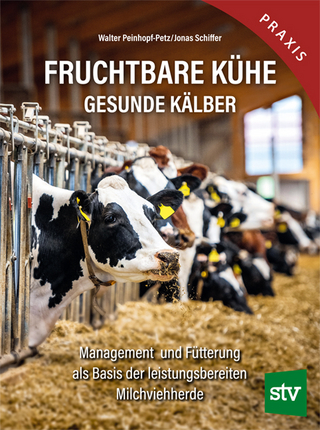
Veterinary Entomology
Seiten
2020
Arcler Education Inc (Verlag)
978-1-77407-783-2 (ISBN)
Arcler Education Inc (Verlag)
978-1-77407-783-2 (ISBN)
Veterinary Entomology is the scientific study of arthropods, a branch of zoology, related to veterinary diseases. This book starts with the study of Ectoparasites, which include fleas, lice, ticks and other insects and arthropods. Ectoparasites are a taxonomically diverse group of organisms that infest the skin of human beings and other animals.
Veterinary Entomology is the scientific study of arthropods, a branch of zoology, related with Veterinary diseases. In this book starts by the study of Ectoparasites, which include fleas, lice, ticks and other insects and arthropods. Ectoparasites are a taxonomically diverse group of organisms that infest the skin of human beings and other animals. This ectoparasites can infect several animal hosts, including dogs, cats, birds and bats. These arthropods can also be vectors of disease, transmitting bacteria, parasites and viruses. The most important arthropods in Veterinary entomology are mosquitoes, ticks and flies, since they can act has ectoparasites and/or vectors of disease. Thousands of mosquito species feed on the blood of various hosts- vertebrates, including mammals, birds, reptiles, amphibians, and some fish; along with some invertebrates, primarily other arthropods. This loss of blood is seldom of any importance to the host. The mosquito's saliva is transferred to the host during the bite, and can cause an itchy rash. In addition, many species can ingest pathogens while biting, and transmit them to future hosts. In this way, mosquitoes are important vectors of diseases such as malaria, yellow fever, Chikungunya, West Nile, dengue fever, filariasis, Zika and other arboviruses. Ticks also need to ingest blood to complete their live cycle. Ticks are vectors of many diseases that affect humans and other animals. Houseflies, commensal with humans all over the world, spread food-borne illnesses. Flies can be annoyances especially in some parts of the world where they can occur in large numbers, buzzing and settling on the skin or eyes to bite or seek fluids. Larger flies such as tsetse flies and screwworms cause significant economic harm to cattle. Blowfly larvae, known as gentles, and other dipteran larvae, known more generally as maggots, are used as fishing bait and as food for carnivorous animals. They are also used in medicine in debridement to clean wounds. In conclusion, this book will cover several aspects of Veterinary Entomology.
Veterinary Entomology is the scientific study of arthropods, a branch of zoology, related with Veterinary diseases. In this book starts by the study of Ectoparasites, which include fleas, lice, ticks and other insects and arthropods. Ectoparasites are a taxonomically diverse group of organisms that infest the skin of human beings and other animals. This ectoparasites can infect several animal hosts, including dogs, cats, birds and bats. These arthropods can also be vectors of disease, transmitting bacteria, parasites and viruses. The most important arthropods in Veterinary entomology are mosquitoes, ticks and flies, since they can act has ectoparasites and/or vectors of disease. Thousands of mosquito species feed on the blood of various hosts- vertebrates, including mammals, birds, reptiles, amphibians, and some fish; along with some invertebrates, primarily other arthropods. This loss of blood is seldom of any importance to the host. The mosquito's saliva is transferred to the host during the bite, and can cause an itchy rash. In addition, many species can ingest pathogens while biting, and transmit them to future hosts. In this way, mosquitoes are important vectors of diseases such as malaria, yellow fever, Chikungunya, West Nile, dengue fever, filariasis, Zika and other arboviruses. Ticks also need to ingest blood to complete their live cycle. Ticks are vectors of many diseases that affect humans and other animals. Houseflies, commensal with humans all over the world, spread food-borne illnesses. Flies can be annoyances especially in some parts of the world where they can occur in large numbers, buzzing and settling on the skin or eyes to bite or seek fluids. Larger flies such as tsetse flies and screwworms cause significant economic harm to cattle. Blowfly larvae, known as gentles, and other dipteran larvae, known more generally as maggots, are used as fishing bait and as food for carnivorous animals. They are also used in medicine in debridement to clean wounds. In conclusion, this book will cover several aspects of Veterinary Entomology.
Patricia obtained her PhD form University College Dublin in 2010. Her interests are on Microbiology and Parasitology. She is currently working as a Postdoc at University of Maryland Baltimore, USA on Chlamydia infections
| Erscheinungsdatum | 15.01.2021 |
|---|---|
| Sprache | englisch |
| Maße | 152 x 229 mm |
| Themenwelt | Naturwissenschaften ► Biologie ► Zoologie |
| Technik | |
| Veterinärmedizin ► Klinische Fächer ► Parasitologie | |
| Weitere Fachgebiete ► Land- / Forstwirtschaft / Fischerei | |
| ISBN-10 | 1-77407-783-3 / 1774077833 |
| ISBN-13 | 978-1-77407-783-2 / 9781774077832 |
| Zustand | Neuware |
| Haben Sie eine Frage zum Produkt? |
Mehr entdecken
aus dem Bereich
aus dem Bereich
Management und Fütterung als Basis der leistungsbereiten …
Buch | Hardcover (2024)
Stocker, L (Verlag)
34,00 €


